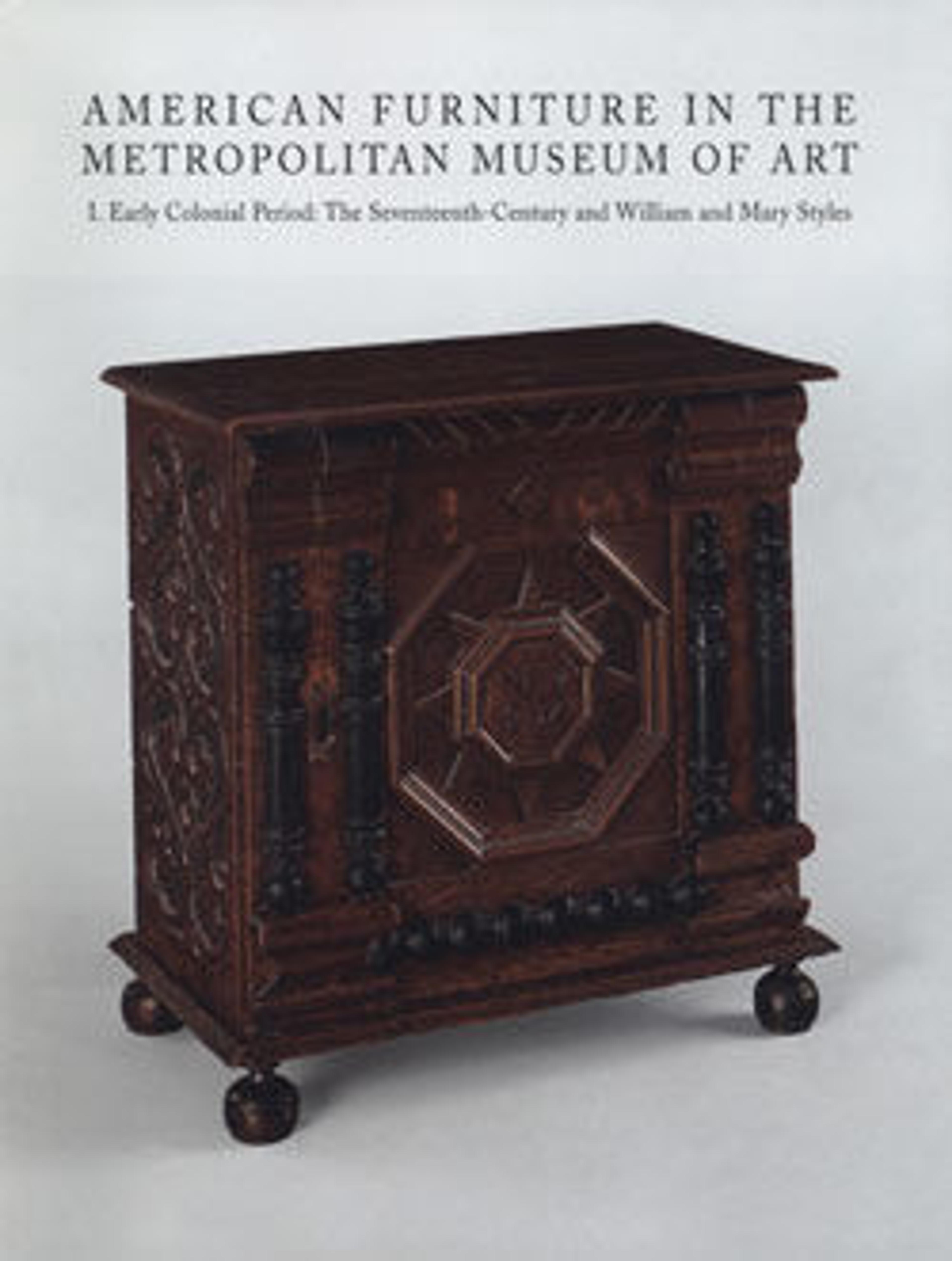High chest of drawers
Japanning, a Western imitation of lacquerwork, became fashionable in the colonies after 1700. A stylish surface treatment in which motifs of vaguely Far Eastern origin were raised, gilded, and varnished, japanning was applied to standard furniture forms and, when bright and new, must have produced a dazzling effect. Here the motifs are arranged on a solid black ground in a relaxed, undulating pattern in which people, animals, oversize flowers, and tiny pavilions happily coexist. A new form introduced in the colonies in the 1690s at the same time as the early Baroque style—known in America as the William and Mary style—the high chest of drawers was the most prestigious piece of furniture in the early eighteenth century. Built in separate upper and lower sections, it was characterized in this period by a skirt and stretchers enlivened by curves and turned legs and feet on which bulbous shapes were boldly juxtaposed to narrow tapers. One of the earliest American examples of japanning, this high chest descended in the Pickman family of Boston and Salem.
Artwork Details
- Title: High chest of drawers
- Date: 1710–30
- Geography: Made in Boston, Massachusetts, United States
- Culture: American
- Medium: Japanned soft maple, poplar, white pine
- Dimensions: 62 1/2 x 39 1/2 x 21 1/4 in. (158.8 x 100.3 x 54 cm)
- Credit Line: Purchase, Joseph Pulitzer Bequest, 1940
- Object Number: 40.37.3
- Curatorial Department: The American Wing
More Artwork
Research Resources
The Met provides unparalleled resources for research and welcomes an international community of students and scholars. The Met's Open Access API is where creators and researchers can connect to the The Met collection. Open Access data and public domain images are available for unrestricted commercial and noncommercial use without permission or fee.
To request images under copyright and other restrictions, please use this Image Request form.
Feedback
We continue to research and examine historical and cultural context for objects in The Met collection. If you have comments or questions about this object record, please contact us using the form below. The Museum looks forward to receiving your comments.
